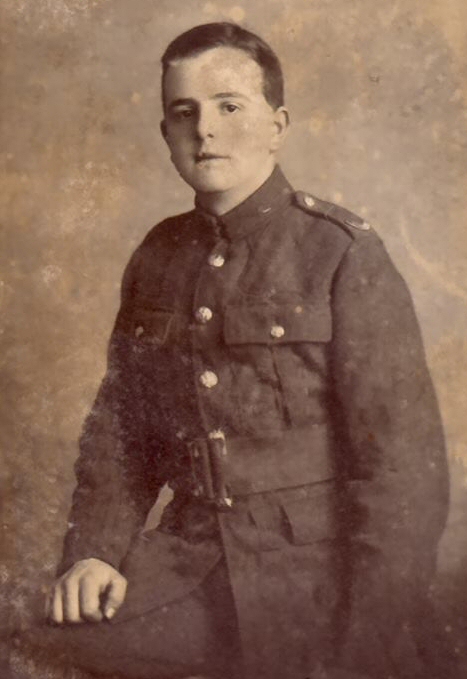|
|
The Channel Islands and the Great War
|
|

Private Albert Edward Le Huray
1st Battalion, Royal Guernsey Light
Infantry
|
|
|
|
This photo was sent from Guernsey
to 1151 Pte Albert Edward Le Huray, RGLI, who was gassed
and taken prisoner of war at Cambrai on 1 December 1917.
It was sent from Guernsey by his father in law, John Wesley
Le Poidevin,and depicts John and his wife Alice, their younger
daughter Ada Mary (who went to France in 1917 with the Salvation
Army with the BEF), and their son John Wesley Robert, my
father. Albert Le Huray was married to John's elder daughter,
Alice.
The back of the photo is damaged in that it was glued
into a scrapbook with blue pages, and it also acquired
a photo corner at some stage. However details of the prisoner
and the camp can be seen. The photo must have reached
its destination and then been brought back to Guernsey
when Pte Le Huray was repatriated.
|
| Heilsberg was a German town, in the province
of East Prussia, at the junction of the rivers Simser and
Alle, about 30 miles to the South of Konigsberg, the regional
capital, now known by its Polish name of Krolewiec. Similarly,
Heilsberg has been known as Lidzbark Warminski since 1945,
when the area became part of Poland.
According to a French website, the camp situated at
Heilsberg during the First World War held mainly French
and Russian prisoners, and was a transit and commando
camp. The barracks were buried underground, to help keep
out the cold, and there was also a “lazaret”
at the camp. This translates as a leper hospital, but
may have had some other special meaning at this time.
Liz Walton
|
Back
|
|